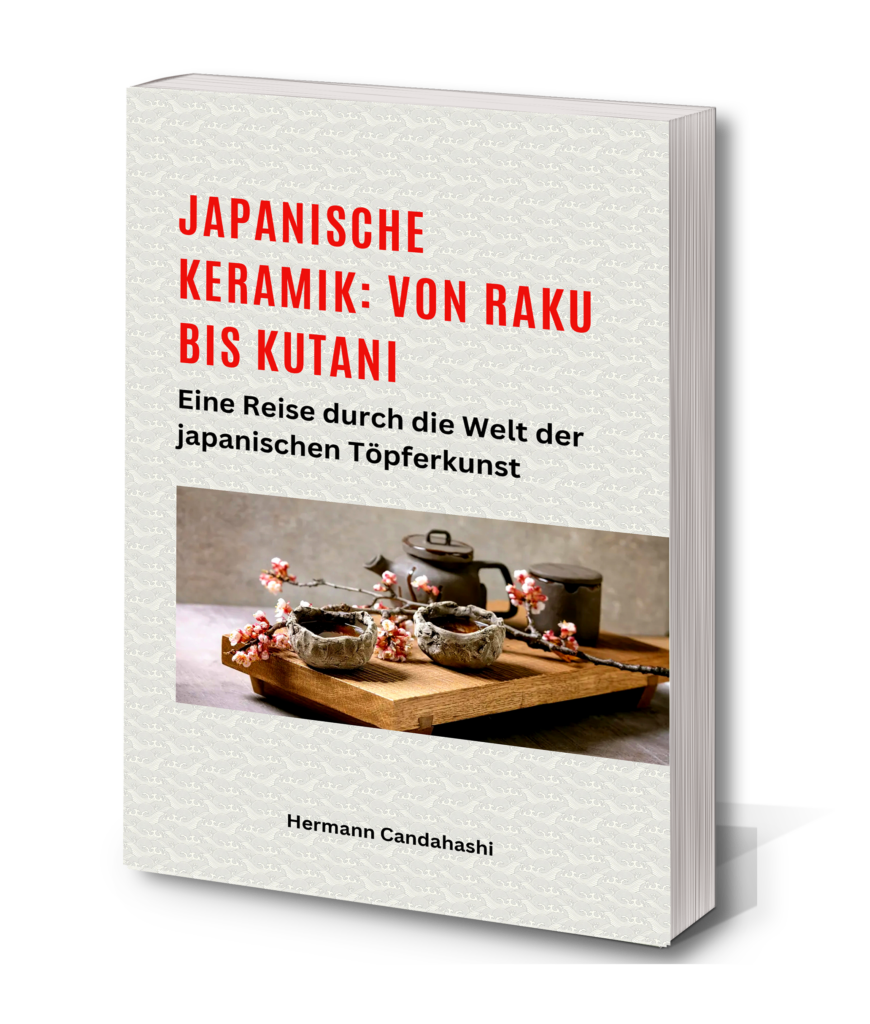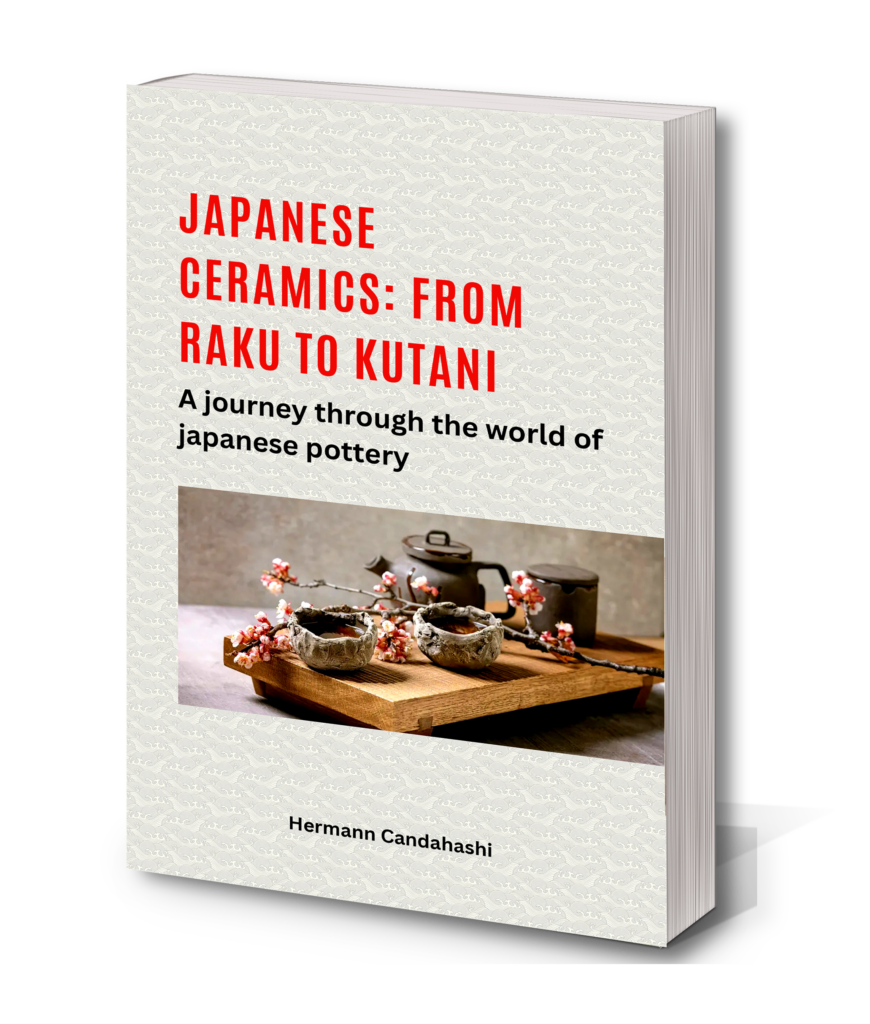

Discover the world of Japanese ceramics: From Raku to Kutani
Immerse yourself in the fascinating world of Japanese pottery! The book “Japanese Ceramics: From Raku to Kutani – A Journey Through the World of Japanese Pottery” invites you on an inspiring journey of discovery. Learn more about the unique techniques, styles and traditions that make Japanese ceramics a symbol of aesthetics and craftsmanship worldwide.
From the rough, earthy forms of Raku ceramics to the delicate and colorful decorations of Kutani art, this book offers a comprehensive overview of the diversity of Japanese ceramic art. It sheds light on the historical development, cultural significance and the fascinating philosophies such as Wabi-Sabi that characterize this art form.
Who is this book suitable for?
This work is aimed at art lovers, collectors, ceramics enthusiasts, Japan fans and all those who are enthusiastic about the combination of tradition and craftsmanship. Whether you are looking for practical insights for your own pottery or want to learn more about the cultural background of Japanese aesthetics – this book will inspire you.
Why should you read this book?
- Clearly and thoroughly explained, ideal for beginners and experts.
- Detailed insights into techniques such as Raku, Shino, Oribe, Hagi and Kutani.
- Background knowledge on cultural and spiritual influences on the art of pottery.
Let yourself be enchanted by the magic of Japanese ceramics. This book is the perfect addition to your art library or an inspiring gift for lovers of Japanese culture and ceramic art.
An Excerpt:
Japanese ceramics are considered one of the world’s most impor-tant craft traditions, outstanding both in their artistry and in their deep cultural roots. From the humble, earthy forms of Raku potte-ry to the bright and complex designs of Kutani pottery, the diver-sity of Japanese pottery is impressive and at the same time a reflection of Japan’s rich history.
The history of Japanese ceramics goes back thousands of years. As early as the Jomon period (14,000 BC to 300 BC), the first inha-bitants of Japan made pottery characterized by distinctive cord patterns. But it was mainly in the following centuries, when the craft was increasingly refined and influenced by cultural exchange with China and Korea, that Japan developed its own distinctive ceramic tradition.
The essence of Japanese ceramics lies in its simple elegance and deep connection to nature. Japanese ceramicists see clay not just as a material, but as a living substance that becomes something unique through the creative process. Every movement, every shape and every firing tells a story – be it about the region from which the clay comes or about the person who created the work of art.
The fascinating world of Japanese ceramics spans thousands of years and embodies the deep connection between craftsmanship, spirituality and everyday culture in the land of the rising sun like no other art form. When I held an authentic Raku tea bowl in my hands for the first time many years ago, I realized that I was facing a centuries-old tradition that is much more than mere artistry. The rough, irregular surface, the warm earth tones and the noticeable presence of the fire in the glaze told stories of masters who dedicated their lives to perfecting their craft.
In this book I take you on a journey through the different eras, regions and styles of Japanese ceramics. We will explore the philosophical and spiritual principles underlying this art and deal with the technical aspects of the various firing methods and glazing techniques. In doing so, we will learn why Japanese ceramics are much more than just a craft – they are an expression of a philosophy of life that finds beauty in imperfection and combines the highest technical precision with artistic freedom.
The history of Japanese ceramics is inextricably linked to the development of the tea ceremony, which has had a significant influence on the aesthetic ideals and formal language of pottery since the 16th century. The concept of Wabi-Sabi, which celebrates the beauty of the simple, imperfect and ephemeral, became the guiding principle of many ceramic artists. In the traditional pottery centers such as Bizen, Shigaraki or Mino, characteristic styles developed over the centuries that are still maintained and deve-loped today.
On the other side of the Japanese ceramics world we find the bright and often playful Kutani ceramics, known for their vibrant colors and detailed patterns. While Raku is valued for its restraint, Kutani represents artistic freedom and the influence of painting on pottery. This ceramic shows how diverse the approaches and styles can be in Japan.
However, Japanese ceramics are not just an aesthetic heritage. They have profound spiritual and cultural meanings that are firmly anchored in the customs and rituals of Japan. The tea cere-mony, meditation and even the daily use of ceramic wares for eating and drinking show how strong the connection is between people and objects created by hand. Ceramics in Japan are not just art, but a way of life.
In modern times, Japanese ceramics are faced with the challenge of combining traditional values and techniques with contempo-rary forms of expression. Many young artists are looking for ways to translate the rich heritage of their ancestors into the present and enrich it with new ideas. This creates exciting syntheses between tradition and innovation that show that Japanese ceramics have lost none of their vitality in the 21st century.
An important aspect that we will explore in this book is the role of ceramics in the cultural exchange between Japan and the rest of the world. Since Japan opened up in the Meiji period, Japanese ceramics have inspired and influenced artists and collectors all over the world. At the same time, Japanese ceramicists have absor-bed impulses from other cultures and integrated them into their own work. The training to become a ceramic artist in Japan still largely follows traditional patterns today. The system of apprenti-ceship with a master, years of patient practice of basic techniques and the gradual development of one’s own artistic expression are essential elements of this educational path. It is not just about teaching technical skills, but also about passing on a holistic philosophy of art.
A special phenomenon in Japanese ceramics is the development of family dynasties in which the craft is passed down through many generations. These Living National Treasures, as they are officially called, not only preserve traditional techniques but also carefully develop them further. Their work is a living example of how tradition and innovation can mutually enrich each other.
This book aims to offer a comprehensive journey through the world of Japanese pottery. From the earthy, rough textures of Raku bowls to the detailed, colorful masterpieces of Kutani ceramics. We will discover the stories behind the techniques, the artists and the cultural influences that have shaped these art forms.
Japanese ceramics are still a living tradition today, valued both in Japan and internationally. Modern artists and collectors are help-ing to preserve and develop the heritage while exploring new, innovative techniques and designs. This connection between past and present makes Japanese ceramics a fascinating and vibrant art form that will continue to play an important role in the future.
So let’s delve into the world of Raku and Kutani and discover the many facets of Japanese pottery.
Yours, Hermann Candahashi
